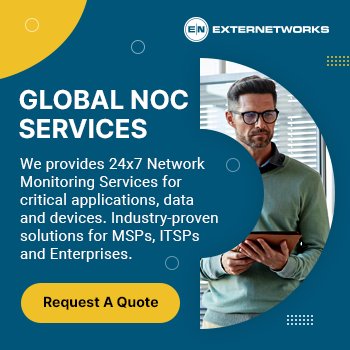Managed Services vs SaaS: Which One Is Better?

What is Software as a Service (SaaS)
Software as a service (SaaS) is an application delivery model where users access the software via the internet instead of installing it locally on their computers. SaaS providers offer hosted services such as email, office suites, customer relationship management (CRM), project management, collaboration services, and others.
SaaS solutions are typically used by organizations that require multiple people to share information and work together online.
Software as a service (SaaS) products are acquired monthly from a third-party provider. This has made SaaS applications more accessible, faster, and cheaper. Instead of spending lump sum amounts on purchasing an application, SaaS allows one to access the same application via smaller monthly payments.
What is a Managed Service?
Managed services are an emerging trend in the world of technology. Businesses are outsourcing their day-to-day operations to third parties who provide these services. They can also outsource their entire IT infrastructure to one company, allowing them to focus on what they do best – running their businesses.
Managed service providers (MSPs) can provide alerts, security, patch management, and data backup for different client devices: desktop computers, laptops, servers, storage systems, and network equipment. By outsourcing these tasks to an experienced MSP, you can focus on running your business without worrying about managing technology.
The Core Differences Between Saas And Managed Service
Cost
Managed IT services are typically more expensive. Although the method is costlier, managed services offer far greater capabilities and solutions. Managed services providers can integrate, maintain, and upgrade the software to ensure a smoother workflow.
Managed service providers offer various billing options, including per-user, per-device, monitoring only, and tiering.
- Per-user pricing models typically charge a monthly fee per device. They cover IT support on all users’ devices and are a simple pricing model that helps minimize the guesswork.
- Managed service providers are in charge only of monitoring the network and alerting their customers. Customers are billed for remediation tasks identified through monitoring.
- Finally, the tiered pricing option is one of the most common pricing models. This option is the best choice if your company needs flexibility in choosing the number of services.
The software as a service (Saas) solution also has different pricing options popular to businesses, and they are as follows: flat fee, usage-based, tiered, and pay-per-user.
- The simplest pricing model is the per-user/per-month (PPM) option. SaaS vendors offer a single price, multiple products, and multiple sets of features, and this is charged monthly and has similarities to traditional software licensing models.
- Another option is the Tiered Pricing Model. This allows for multiple package offers, with different combinations charged at varying prices.
- Finally, the per-user price model is the go-to-use SaaS pricing option. It’s popular because of its simplicity. A single user spends an annual flat rate; add another user and the cost doubles, and so on.
Services offered
The most common services for remote IT services include remote monitoring and management of server, desktop, and mobile device networks. These services are usually the foundation of managed service providers; however, they can also offer additional services, such as managed security services. Managed security services are especially useful for organizations that require help securing their network infrastructure. Service providers partner with third-party companies that specialize in cybersecurity. In addition, service providers have developed practices for protecting their clients’ information. They have also partnered with third parties that specialize in cybersecurity.
On the one hand, SaaS provides two standard service models: hosted applications and software on demand. In a hosted application model, the provider hosts your software and, with the help of the internet, delivers the software to authorized users. In the software-on-demand model, the SaaS provider offers customers access to an individual copy of the software specially designed for SaaS distribution purposes. The source code of this software is the same for every user. When there are new functions or features, they are rolled out to all users.
Security
Remote managed IT services offer various benefits to secure an organization’s data. These benefits consist of constant remote monitoring and the generation of relevant reports to inform an organization about the state of its systems. Another security benefit is providing compliance assistance, risk assessments, and correlation analyses to monitor the network’s activities constantly.
With SaaS (Software as a Service), on the other hand, users do not have complete control over their data since they store it in the cloud. However, with SaaS, users can access these services from any device connected to the internet. In addition, SaaS allows users to pay only for what they use rather than paying upfront for an entire service.
Stability and Predictability
One of the most important benefits of managed IT services is their stability. Unlike traditional IT support models, which are only available during business hours, managed IT services provide round-the-clock access and can prevent any issues.
In the SaaS model, data portability can also be a problem. The risk of losing data becomes unpredictable and unstable. What would happen to an organization’s data if the SaaS provider collapses? Unluckily, this is one of those risks an organization should consider before choosing a SaaS solution.
Scalability
Businesses grow and evolve, and their needs change; at some point, the solution they’ve invested in may need to be modified or updated. Scalability, flexibility, and adaptability are vital to any business that utilizes different IT solutions.
With remote IT services offered through a managed service provider, an organization does not have to worry about switching out approaches as it grows larger. A managed service provider is already set up to handle day-to-day technical issues, maintain and monitor networks and systems, and assist an organization plan for future technological needs.
Saas solutions often reside in scalable cloud environments. They enable organizations to select the delivery model and change it when the requirements of businesses change. SaaS applications are scalable because they allow organizations to pick the delivery model and switch between them. Organizations can add extra features without buying more servers or software. SaaS applications are easy to integrate into existing systems and get new users.
Updates and Upgrades
For Managed IT Services, basic services are offered for upgrading the system. This includes updating, patching, and upgrading for the server and desktop. Any machine covered under the agreement with the service providers has an automatic update run on schedule. Organizations that use these services don’t have to worry about the time it takes to check for updates and apply necessary patches. Updates and upgrades happen automatically using Manage IT Service.
For SaaS models, upgrading is often done automatically by the service providers. The SaaS providers ensure that organizations they partner with are provided with the latest application version, and this is done without requiring them to customize or reimplement their existing features. Service level agreements (SLAs) between the SaaS providers and the availing organizations typically include frequent, automatic, and regular updates as part of the subscription package.
Availability and Accessibility
Managed IT services provide excellent performance for any business, regardless of their need. They ensure that there is always someone available to assist you at any hour of the day or night.
On the other hand, the SaaS model can be available and accessed in all locations with an Internet connection. This is unlike licensed software that provides limited access because it is dedicated only to a specific number of devices and can’t be accessed using foreign computers. Location is not only the advantage of SaaS when it comes to accessibility. The SaaS model is compatible across multiple devices, and this advantage increases mobility and independence.
What Kind Of Service To Choose?
As usual, it varies depending on the premise. The Saas product development may be a good choice for business owners who commit entirely to staffing their IT team. It is a blessing for those who need outsourced applications to have advanced features and exceed their competition. In brief, the companies that already possess an in-house IT infrastructure will benefit most from the SaaS model.
With managed services, organizations access reliable security solutions that help them protect their networks from cyberattacks and malware. These tools provide constant remote monitoring and create relevant and useful reporting to monitor the health of the systems they manage.
On the other hand, the SaaS model does not give complete control over all data for customers because the data is hosted in the cloud. Although SaaS applications can be accessed anywhere with the internet, the customer needs to perform a security review of an app before subscribing, especially if it is deployed on a publicly shared cloud.
Another thing to be considered is cost. In direct comparison, Managed Services are more expensive than Software as a Service (SaaS). Smaller companies may find it more economical to use a hosted service instead of paying for the entire server infrastructure. However, larger organizations can benefit from the flexibility of having complete control over their servers.
Conclusion
In conclusion, both Managed services and SaaS offer advantages and disadvantages. When choosing one option over another, it’s important to consider your company’s current situation and plans. SaaS might be the best solution for you if you’re looking for a way to increase productivity and efficiency. On the other hand, if you want to save money and time, then Managed Services could be the right choice.





